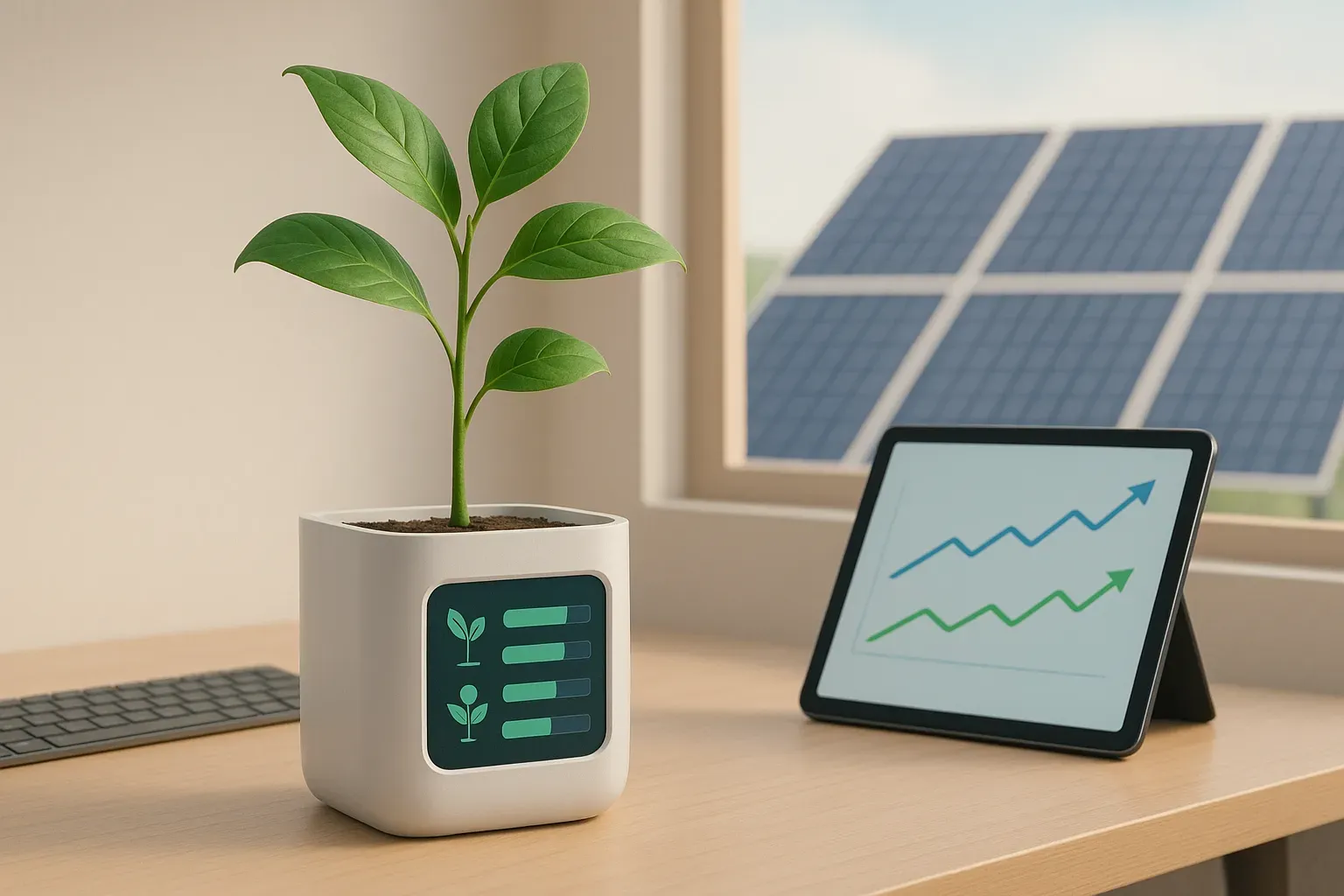E-commerce technology integration is revolutionizing the way businesses operate in the digital realm. This article explores ten key areas where technology is making a significant impact, from enhancing fulfillment efficiency to boosting customer retention. Drawing on insights from industry experts, we’ll examine how these technological advancements are shaping the future of online retail and driving business growth.
- Tech-Driven 3PL Matchmaking Transforms Fulfillment Efficiency
- E-Commerce Empowers Sun-Safe Fashion Brand Growth
- Data Integration Enhances Digital Marketing Strategies
- Streamlined Checkout Process Boosts Customer Retention
- Advanced E-Commerce Tools Elevate Client Partnerships
- SEO Benefits Drive Print Business E-Commerce Success
- Real-Time Inventory Tracking Improves Customer Satisfaction
- Synced Online-Offline Inventory Prevents Sales Losses
- Personalized Recommendations Increase Conversion Rates
- Shopify Platform Facilitates Coffee Brand Expansion
Tech-Driven 3PL Matchmaking Transforms Fulfillment Efficiency
Integrating e-commerce technology has been transformative for our mission of connecting businesses with the right 3PL partners. Our advanced matchmaking platform represents the cornerstone of this integration, allowing us to analyze complex fulfillment requirements and identify optimal partnerships in minutes rather than the weeks it traditionally took.
One specific success that stands out was with a mid-sized apparel brand struggling with seasonal inventory fluctuations. They were losing money on warehouse space they didn’t need during off-seasons while scrambling during peaks. By integrating their sales forecasting data directly into our platform’s API, we matched them with a tech-forward 3PL offering flexible storage solutions. The result? Their warehousing costs decreased by 31% while maintaining faster shipping times.
The key lesson we’ve learned is that technology integration isn’t just about connecting systems—it’s about creating a unified ecosystem where data flows seamlessly to drive better decisions. When we first launched, we focused primarily on our matching algorithm. However, we quickly realized that creating integration pathways between our clients’ existing tech stacks (their Shopify, BigCommerce, or WooCommerce stores) and our 3PL network’s WMS systems delivered exponentially more value.
This technology-first approach has allowed us to scale from helping dozens to thousands of e-commerce businesses. The most significant insight I’d share is that in today’s logistics landscape, the companies that embrace deep technology integration don’t just save on operational costs—they gain a genuine competitive advantage through superior customer experience and agility that simply wasn’t possible before.
 Joe Spisak
Joe Spisak
CEO, Fulfill(dot)com
E-Commerce Empowers Sun-Safe Fashion Brand Growth
Integrating e-commerce technology didn’t just help us launch; it helped us listen. When we first introduced our collection of sun-healthy beachwear, we knew we were solving a personal need. I’ve had multiple biopsies since my early 20s, and I was tired of choosing between protection and style. By going digital from day one, we could immediately connect with customers who felt the same. One early buyer wrote, “I finally feel like I don’t have to dress like I’m avoiding fun to take care of my skin.” That kind of feedback helped us shape everything from the fit of our cover-ups to how we talk about sun safety.
E-commerce gave us a way to test, learn, and refine in real-time. After our first summer, we noticed our size medium sold out three times faster than others. It sparked a full overhaul of our inventory strategy and led to our most successful restock to date—one that sold out within 72 hours. It also helped us discover an unexpected customer base: women undergoing photosensitivity treatment, who messaged us saying they hadn’t felt comfortable at the beach in years. That was the moment we stopped seeing our product as just stylish protection; it was a form of empowerment.
The real turning point came when we started integrating educational storytelling into our product pages and emails. We explained how our fabric’s UPF 50+ rating doesn’t come from a chemical coating but from the way the fibers are woven, and how the cooling effect on skin helps in real heat—not just marketing heat. Those small changes led to a 34% increase in repeat purchases and more customers writing in with questions about how to layer our pieces or pack them for travel. We weren’t just selling; we were starting a conversation.
Running online has taught me that the best tech decisions are the ones that help you stay human. E-commerce didn’t just streamline logistics or expand our reach; it gave our customers a voice in what we create. And when you’re building something rooted in health and self-confidence, there’s no better data than that.
 Laura Kosmorsky
Laura Kosmorsky
Co-Founder, Tied Sunwear
Data Integration Enhances Digital Marketing Strategies
Integrating e-commerce technology into our digital marketing services has opened up new ways to drive results for clients—and for us. As more businesses moved online, especially during peak retail seasons, we started leaning into tools like Shopify, WooCommerce, and custom APIs to connect marketing efforts directly to sales data. Instead of guessing which products were moving, we saw exactly what worked, down to the time of day.
One notable success came from working with a niche skincare brand. We synced their Shopify backend with our paid ad and email platforms. We tracked customer behavior from click to checkout, which let us create segmented email flows based on real purchase habits—like follow-ups after cart abandonment or upsells tied to previous orders. Within a few months, their return customer rate increased and we cut ad spend waste by nearly 20%.
On our side, offering e-commerce tech as part of our package made our agency more valuable. Clients no longer needed separate teams for marketing and store management; they got both under one roof.
The biggest lesson? Don’t treat e-commerce tools as just back-end tech. When they’re built into the marketing process, they can shape smarter strategies and more responsive campaigns.
 Matt Bowman
Matt Bowman
Founder, Thrive Local
Streamlined Checkout Process Boosts Customer Retention
Bringing e-commerce technology into the mix completely reshaped how we handle the customer experience—it was like unlocking a whole new level of efficiency. One of the most noticeable changes came from adding automated cart reminders. Honestly, I didn’t expect such a big shift from something so simple, but we ended up cutting our cart abandonment rate by 30%, almost overnight. It really opened my eyes to how much money was slipping through the cracks before. That one feature led us down a rabbit hole (in a good way) of refining every little part of the checkout process.
We started focusing less on bells and whistles and more on making the journey from “browse” to “buy” feel ridiculously smooth. Things like simplifying forms, making sure everything worked perfectly on mobile, and giving people the option to check out as a guest—those details made a bigger difference than I imagined. The biggest takeaway? People don’t want to think too hard when they’re trying to buy something. If you make it easy, they’re more likely to come back. So yeah, integrating technology was great for our numbers, but it was also a major mindset shift in how we design and support our online store.
 Nikita Sherbina
Nikita Sherbina
Co-Founder & CEO, AIScreen
Advanced E-Commerce Tools Elevate Client Partnerships
Bringing e-commerce technology into our workflow has made our partnerships with long-standing clients more dynamic. Many of them started with us years ago when their online stores were simpler. As their needs grew, so did the tech stack. We integrated platforms (like Shopify Plus, Klaviyo, and Google Tag Manager) to create a smoother connection between what we were marketing and what customers were actually doing on their sites.
One of the biggest wins came when we helped a long-time apparel client migrate to a more flexible e-commerce setup. By linking their product catalog and inventory system with their email marketing and ads, we stopped promoting out-of-stock items and started pushing what was moving fast. The result? Fewer customer complaints and a noticeable bump in conversion rates.
It also changed the way we report performance. With deeper access to backend e-commerce data, our account managers were able to generate stronger insights and helped our clients see how marketing efforts played out in real dollars—not just traffic or likes.
 Aaron Whittaker
Aaron Whittaker
VP of Demand Generation & Marketing, Thrive Digital Marketing Agency
SEO Benefits Drive Print Business E-Commerce Success
It has helped our printing business rank for keywords that would have been impossible to rank for without an e-commerce platform. The ability for Google to collect order data, customer reviews, longer sessions, and product schema tells Google that our website is worth ranking for print-related keywords. My advice would be to understand that every e-commerce business is a marketing business by default.
Without knowing how to climb higher in search rankings, you’ll have little traffic and few orders. Consider that the average conversion rate is 2%, and if you have only 50 daily visitors, one order a day won’t come close to recouping your investment in your e-commerce website. Focus on how to get to 100, then 500, then 1,000+ daily visitors, and you’ll enjoy the fruits of your labor.
 Nick O’Brien
Nick O’Brien
CEO, Templi
Real-Time Inventory Tracking Improves Customer Satisfaction
Integrating e-commerce technology has had a notable benefit for us. One such implementation is real-time inventory tracking, which has drastically reduced our fulfillment errors and improved overall customer satisfaction. By having a clear view of stock levels and product availability, we can provide accurate delivery timelines, reducing uncertainty for our customers and empowering them to make informed decisions.
Advanced analytics tools have allowed us to gain deeper insights into customer behavior and purchasing patterns, informing our marketing strategies and product offerings. We’ve learned that customer preferences can shift rapidly; thus, our ability to respond quickly to these trends has become crucial.
Leveraging customer feedback through integrated review systems has significantly enhanced our product development and service offerings. The feedback has taught us the value of listening to our customers and using their insights to drive improvements.
 Josh Qian
Josh Qian
COO and Co-Founder, Best Online Cabinets
Synced Online-Offline Inventory Prevents Sales Losses
Integrating e-commerce technology has been a game-changer for us. One standout was adding a real-time inventory system that syncs with our online shop. Before that, we’d lose sales because customers bought pieces we had just sold in-store.
Now, if a teak dining set sells in our showroom, it disappears online instantly. It’s simple, but it has saved us countless hours of customer service headaches and given shoppers more confidence to buy.
Technology should make the experience smoother for both you and your customers. Don’t add flashy tools just to have them—focus on the ones that solve real problems.
 Chris Putrimas
Chris Putrimas
CEO, Teak Warehouse
Personalized Recommendations Increase Conversion Rates
Integrating e-commerce technology brought a noticeable shift in how customers engaged with our online store. One specific change that made a big difference was adding a real-time recommendation engine powered by user behavior and browsing history.
This allowed each shopper to see products that actually fit their interests, without needing to search too hard. As a result, conversion rates increased by 35% within six months, and more visitors came back—leading to a 25% rise in returning customer rates.
The biggest takeaway was realizing that smart technology isn’t just about automation—it’s about relevance. When people feel like the experience is built for them, they respond. Personalization became the key driver not just for higher sales, but for building stronger customer relationships.
 Murray Seaton
Murray Seaton
Founder and CEO of Hypervibe / Health & Fitness Entrepreneur, Hypervibe (Vibration Plates)
Shopify Platform Facilitates Coffee Brand Expansion
Working with Shopify as our e-commerce platform has made it easier for us to set up our site, have it running on schedule, and grow with us in the long run. The integrations that come with it, such as Shopify Analytics, have also enabled us to gain accurate data on our sales performance.
Shopify also made it possible for us to set up our own blog where we continue to write content about all things relevant to coffee; from general info, research studies, recipes, and coffee brew guides. This eventually resulted in ranking higher on search engines, further increasing our brand’s visibility, expanding our reach, and driving new people to our site.
 Mimi Nguyen
Mimi Nguyen
Founder, Cafely













